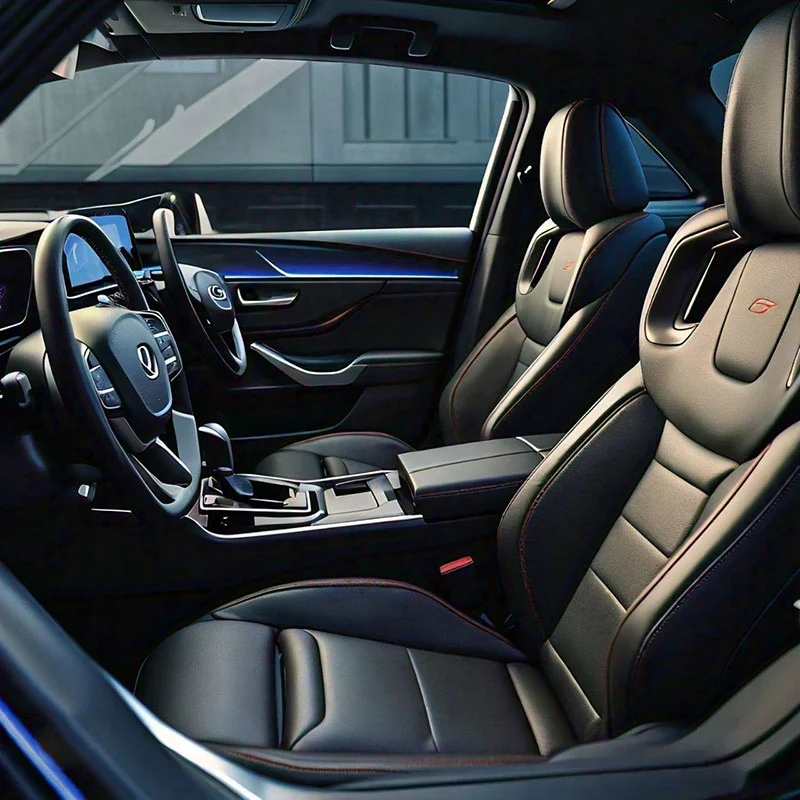What to Look for When Ensuring a Vehicle’s Safety
You must ensure the safety of your car to keep yourself, your passengers, and other drivers safe. Although many safety systems are included in modern cars, routine maintenance and knowledge of vital safety features are equally crucial.
Knowing what to look for in terms of tires, brakes, and safety systems can significantly reduce the likelihood of an accident. Moreover, you must be aware of these important factors that will help you keep your car in peak condition. This is regardless of the fact whether you’re buying a new one or maintaining your existing one. Here are the most important things to look for when making sure your car is secure.

1. Tire Condition and Tire Types
Tires are essential to a car’s safety because they give you the traction you need to maintain control while driving. You must check your tires’ tread depth on a regular basis. This is because worn tires can cause poor handling, particularly in cold or wet situations. Since underinflated or overinflated tires can impair braking and fuel efficiency, the proper tire pressure is equally crucial. Moreover, you should think about tire kinds according to your driving circumstances as well.
Although all-season tires are useful, performance tires are better suited for high-speed situations, and winter tires offer superior traction in snow and ice. Selecting the appropriate tires improves overall safety, stability, and grip.
2. Braking System
Arguably, a car’s braking system is its most crucial safety component. This is why you should check your brakes frequently for wear indicators like grinding or squeaking sounds. These point to the need for new brake pads.
Moreover, you must keep an eye on the brake fluid levels in addition to the brake pads. This is because low levels might affect how well the brakes work.
Furthermore, ABS (anti-lock brake system) enhance control when applying severe brakes by preventing wheels from locking up during emergency stops. Brake system maintenance is essential for preventing collisions and having fast reaction times in emergency situations.
3. Lights and Signals
For road visibility and communication, lights and signals must be operating properly. Make sure your turn signals, brake lights, and headlights are in good operating order by doing routine inspections.
Remember, particularly at night or in inclement weather, dim or faulty lights might make it harder for other drivers to see you.
Additionally, make sure your high beams and fog lights are functioning correctly so you can drive in a variety of conditions.
Remember, maintaining your lights in good condition lowers your chance of getting into an accident. This enables you to drive safely and communicate your intentions to other drivers.
4 Seat Belts and Airbags
Airbags and seat belts are crucial parts of a car’s passive safety system. You must verify that seat belts are:
- Securely fastened,
- Retract smoothly, and
- Operate as intended during abrupt stops.
Since worn-out seat belts can fail in an accident, look for fraying or damage. Airbags should be tested frequently as part of standard maintenance, particularly in older cars.
Moreover, as airbags are essential for minimizing injuries in collisions, make sure the sensors are functioning correctly. Airbags and seat belts both greatly lower the chance of harm in collisions, so it’s critical to make sure they’re in good working order.
5. Advanced Safety Technology
Advanced safety systems installed in modern cars can stop collisions before they happen. Features like autonomous emergency braking, front collision warning, and lane departure warning can improve driver awareness and reaction times.
Moreover, when purchasing a new vehicle, you should look for safety features like adaptive cruise control. These automatically modify speed to maintain a safe following distance or blind-spot monitoring.
Furthermore, they assist in detecting vehicles in difficult-to-see regions. Hence, making sure these systems are operating correctly can significantly lower the risk of mishaps and add extra security.
Wrapping Up
Modern technology is only one aspect of vehicle safety. The other is making sure all the parts are in good operating order. Your car will continue to run safely if you regularly check your tires, brakes, lights, and seat belts and maintain any sophisticated safety equipment.
Moreover, proactive car maintenance not only increases the lifespan of your vehicle but also safeguards other drivers.
By concentrating on these important areas, you can drive with confidence knowing that your car is prepared to handle a variety of road conditions and avoid collisions.
